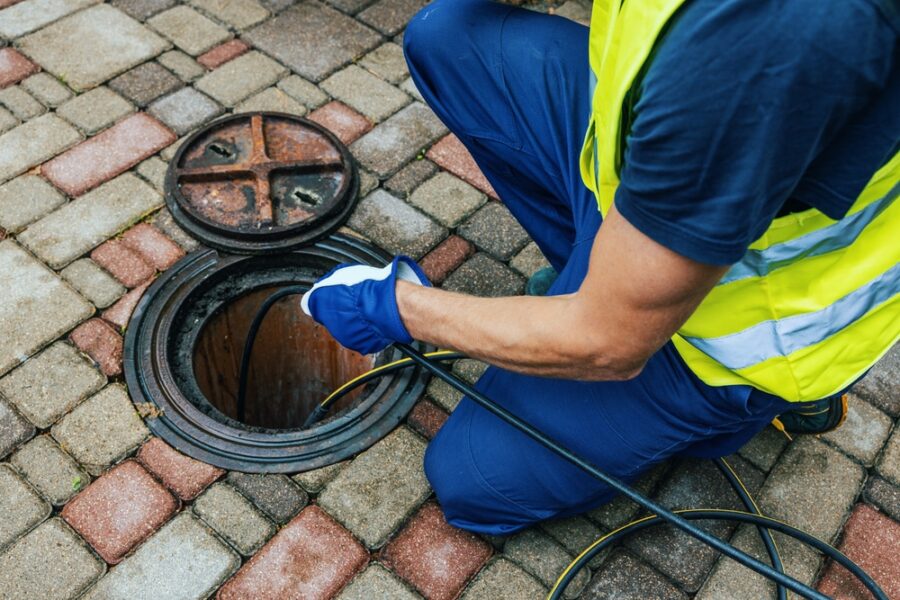A clogged drain can completely stop your daily activities. Plumbing problems such as overflowing sinks and gurgling toilets require strong solutions. Let me introduce you to jet sewer and drain cleaners, the ultimate toolkit for clearing tough blockages. Identifying the “best” jetter, however, requires navigating through an extensive list of features and specifications.
Having the proper tools is crucial for maintaining and cleaning your drainage system. A sewage jetter, sometimes referred to as a hydro-jetter or a water jetter, is a strong cleaning tool that clears buildup and obstructions from sewer lines and drains using high-pressure water.
In this guide, we’ll explore the features of the best sewer jetters on the market, different jetter types, and crucial factors for selection, empowering you to make an informed decision.

Sewer jetters are made for a variety of cleaning jobs and are available in varying sizes and power capacities. For home usage, they might be small, portable devices, or big, truck-mounted systems for municipal use. A nozzle, a pressurized water machine, and a high-pressure hose are the main parts of a sewage jetter. Here’s a glimpse into their operation:
Jet sewer and drain cleaners come in various configurations to cater to diverse needs and applications. Here’s a breakdown of the two main categories:
Finding the “best” jet sewer and drain cleaner might be like going through a maze because there are so many options available. Here are a few crucial things to consider:
Are you planning to use the jetter for residential or commercial purposes? The size and complexity of the drain lines you’ll be cleaning will significantly impact the required water pressure and flow rate.
A sewage jetter’s efficiency is primarily determined by its pressure (expressed in PSI) and flow rate (expressed in GPM). While debris is more efficiently cleared by a faster flow rate, stronger obstructions can be broken through with greater pressure.
Different drain line sizes are intended for different types of jetters. Make sure the jetter you select is able to handle the drain diameter.
How deep you can clean within a drain depends on the length of the hose. To sustain the tremendous pressure without leaking or breaking, a strong hose is essential.
Various cleaning chores require different types of nozzles. Some rotating nozzles are designed to lubricate or descale pipelines, while others are capable of cutting through roots.
Take into account the water pressure and flow rate required for the particular cleaning jobs you have. Larger drain lines and more difficult obstructions require higher pressure and flow rates.
In your opinion, how significant is portability? A smaller, electronic type or even one that is skid-mounted would be a better option if you require a jetter for multiple places.
Basic domestic jetters cost a few hundred dollars, whereas professional jetters installed on trailers can cost tens of thousands of dollars. Give top priority to features that meet your needs while keeping an eye on your budget.
The following are some of the best sewage jetters on the market, according to our research and user reviews:
Recommended reading: HOW TO CHOOSE THE RIGHT PLUMBING FIXTURES FOR YOUR HOME
With 35 years of expertise, Vossler Plumbing Co. provides clients in need of plumbing and drainage solutions with extensive industry knowledge, as well as access to the most cutting-edge resources and equipment. A hydro-jetting method should only be used by a licensed plumber, as opposed to drain snakes or chemicals. To put it another way, don’t try to buy a machine or build your own hydrojet system. Experts are aware of proper methodology and necessary safety measures. To do a video examination and select the appropriate specialized nozzle types, an experienced specialist is also required.
Contact us today at 713-688-2304 more information on hydrojet drain cleaning, the finest jet sewer and drain cleaners, and other drain repair services.
Whatever you’re experiencing, we have the technical expertise to help. Click below to share your information along with any specific details or photos, and we’ll be in touch with you as soon as possible with an estimate.